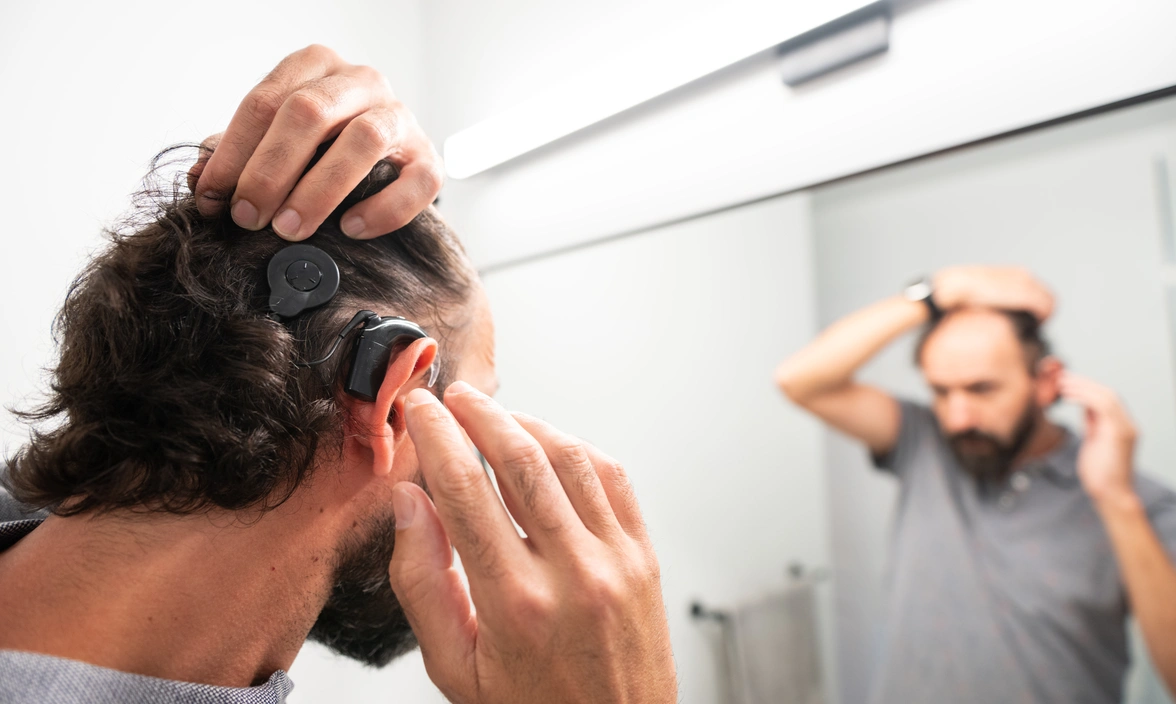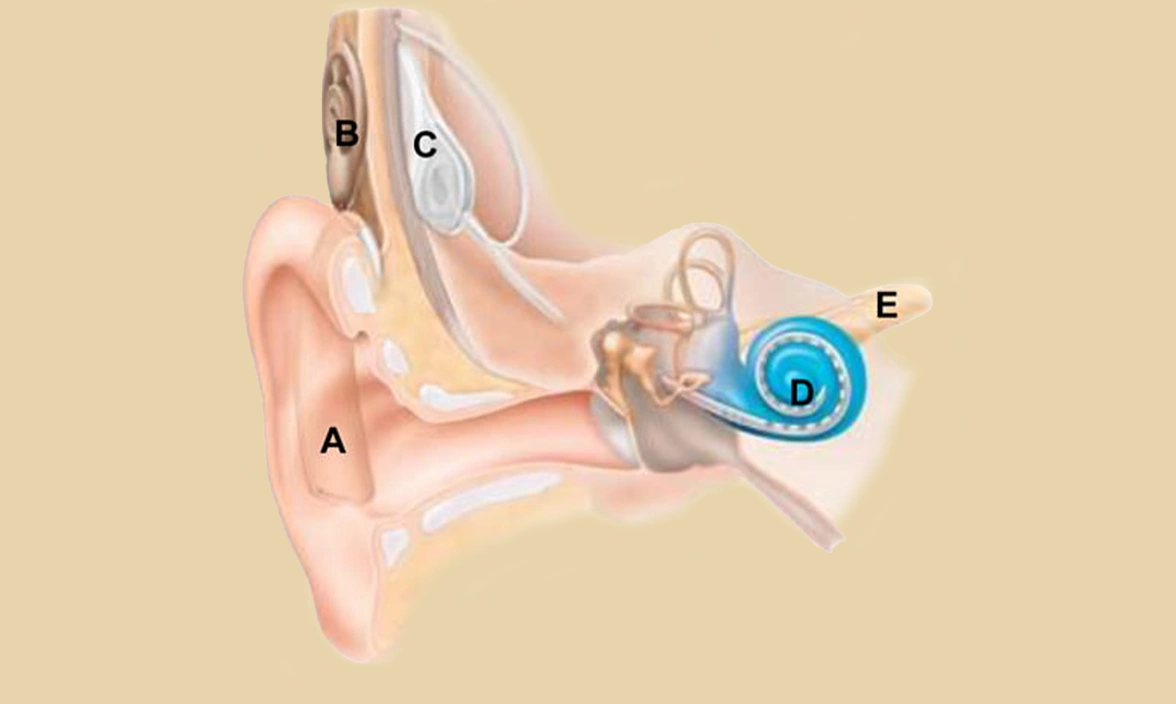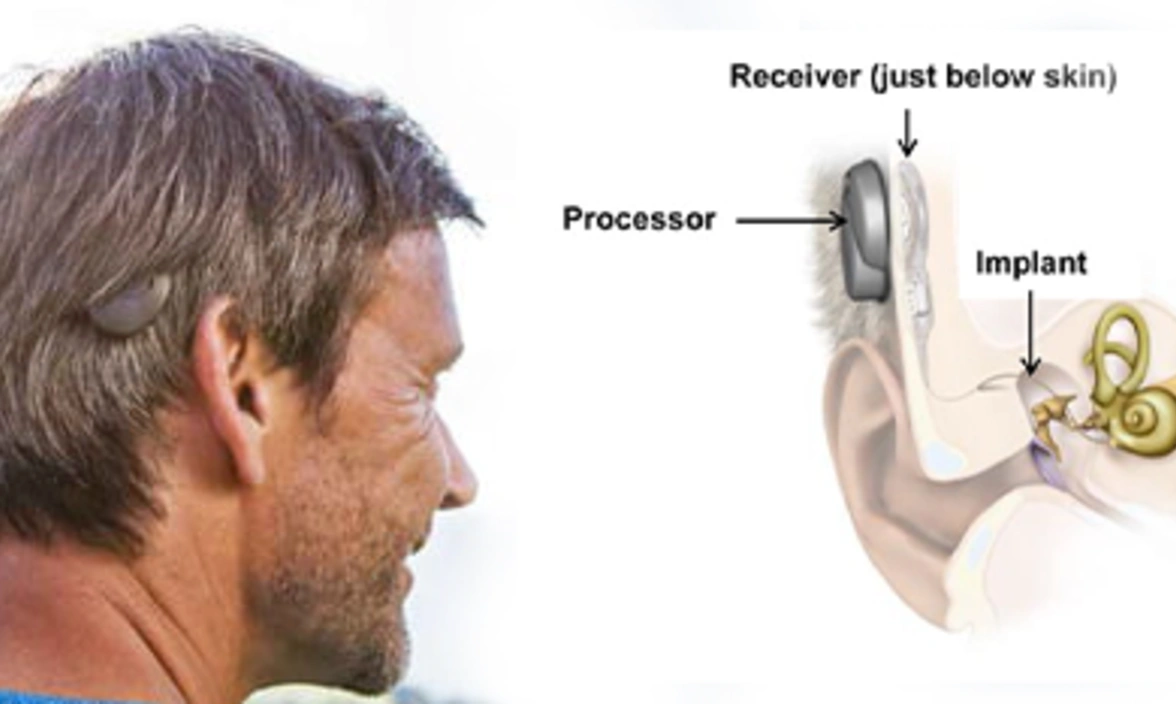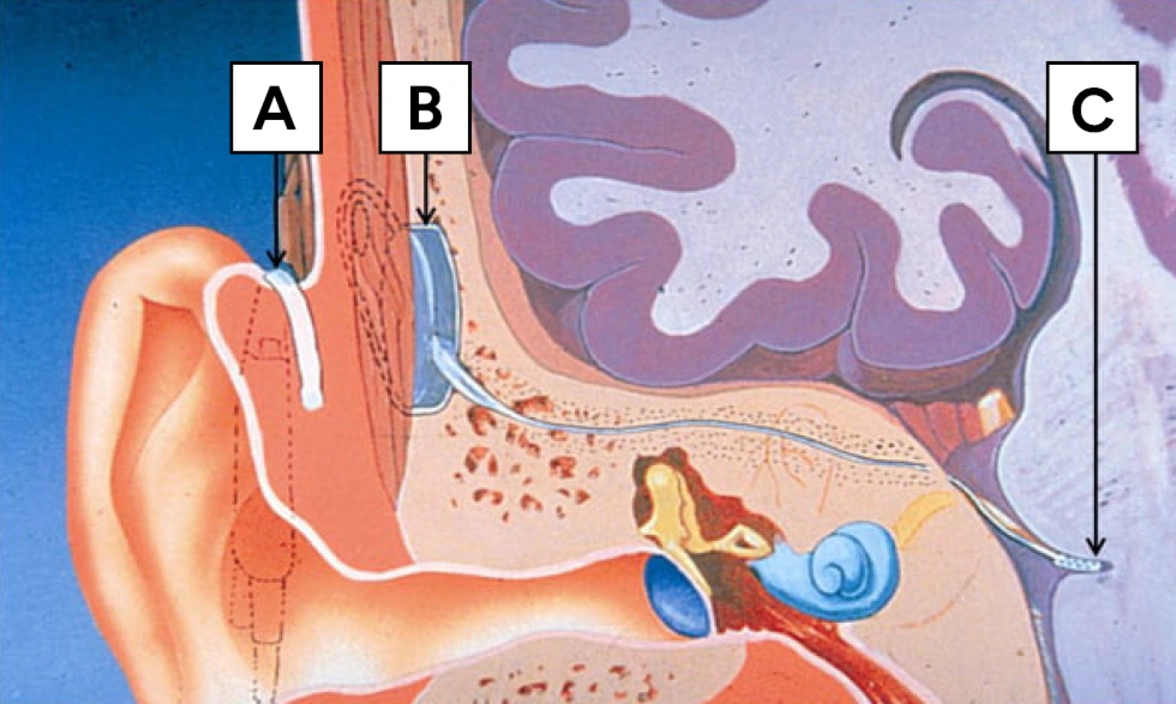Implants
There are four types of hearing implants available in the UK, each designed to meet different hearing needs and medical conditions.
There are four types of hearing implants available in the UK, each designed to meet different hearing needs and medical conditions.

The availability of these is determined by the severity or type of hearing loss you have.
It is important to ask your healthcare provider about eligibility criteria for receiving a hearing implant. You may have to undergo further testing to determine if you are a candidate for any device.
It is also important to discuss the expectations of how an implant can help you and the risks of undergoing implant surgery. This must be discussed thoroughly with a surgeon prior to implantation.
Although hearing implants can help a deaf person to hear better, they will not restore hearing to normal levels.
The four common types of hearing implant offered in the UK are - cochlear implant, bone conduction hearing device, middle ear implant and auditory brainstem implant.
Each require a level of surgical intervention. Below we explain the difference between these types and how they can help you.
A cochlear implant is a surgically implanted electronic device that provides a sense of sound to a person who has a severe or profound hearing loss.
There are approximately 20,000 cochlear implant users in the UK, and one million worldwide. It is the most common type of implant prescribed for people with hearing loss.
A cochlear implant has two parts – the sound processer (external) and the implant which is surgically placed under the skin.
As described in the diagram pictured above, the sound processor (A) captures sound and turns it into digital code using a battery that powers the entire system. It transmits the digitally coded sound through the coil (B) to the implant (C) just under the skin.
The implant (D) converts the digitally coded sound into electrical signals and sends them along the electrode array which is positioned in the cochlea (the inner ear) (D).
The result is that the implant’s electrodes stimulate the cochlea’s hearing nerve fibres (E), which relay the sound signals to the brain to produce hearing sensations.
All systems of this kind have the same broad characteristics and design principles and are all well engineered.
To use a cochlear implant the recipient must undergo a surgical procedure.
During the operation, the surgeon will make an incision behind the ear to gain access into the middle ear and cochlea.
The surrounding area behind the ear will be shaved to facilitate this and this will quickly regrow. The operation lasts two to four hours under general anaesthesia and typically people spend one night in hospital.
The operation is a delicate and intricate procedure. There is a chance that the surgery could fail, and hearing will not be restored for the recipient. Your surgeon will discuss these risks during your consultation appointment.
Around four weeks after successful surgery, implant recipients will attend an appointment to activate their cochlear implant and hear sounds for the first time.
There will be follow-up appointments in the months after the procedure to assess how the implant is working and to make fine adjustments to the processor.
Recipients will need to undergo rehabilitation and care in the months after implantation. This will help with healing, adjusting to the implanted device and more.

Bone anchored hearing aids are prescribed when traditional hearing aids are not suitable, particularly for people with outer or middle ear problems.
These devices bypass the damaged areas by sending sound vibrations through the bone directly to the cochlea, helping those with conductive or mixed hearing loss.
The device has two main parts:
They are considered as an option for a person with hearing loss when ear canal issues prevent using regular hearing aids, and they provide clear, natural sound without needing an ear mould.
While they do not fully restore hearing, they improve day-to-day hearing experiences and are compatible with assistive listening systems like telecoils.

Middle ear implants are a modern alternative to conventional hearing aids, designed for people with mild to moderate sensorineural, mixed, or conductive hearing loss—especially those who cannot wear standard aids due to issues like ear infections, skin conditions, or malformed/narrow ear canals.
The device has two parts:
It works by vibrating parts of the middle ear or cochlea membrane to amplify sound, using the natural hearing pathway. It requires a functioning cochlea and hearing nerve.
Middle ear implants may be considered when traditional aids or bone-anchored devices are unsuitable. They offer clearer, more natural sound without an earmould and support wireless connectivity (e.g., Bluetooth, telecoil) for use with mobile and assistive devices.

Auditory Brainstem Implants (ABI) are for people with profound sensorineural hearing loss, particularly when the hearing nerve is non-functional.
The device bypasses both the cochlea and the auditory nerve, directly stimulating the brainstem to provide a sense of sound.
The main components are:
ABIs are primarily prescribed for those with Neurofibromatosis Type 2 (NF2) — a condition often involving tumours on the hearing nerves. It is also considered (though rarely) for individuals born without a hearing nerve, with abnormal cochlea structure, or severe cochlear damage (e.g., from meningitis).
These devices can offer an alternative when no other hearing device is suitable. However, they require complex brainstem surgery and results of said surgery vary.
For further information on nerve tumours, visit the Nerve Tumours UK website.

For further information about how hearing implants work, visit our video resource page for short tutorials.

There are other organisations in the UK that offer detailed information on hearing implants.
Registered charity in England and Wales no. 293358 and in Scotland no. SC040486. Royal Patron HRH The Princess Royal.